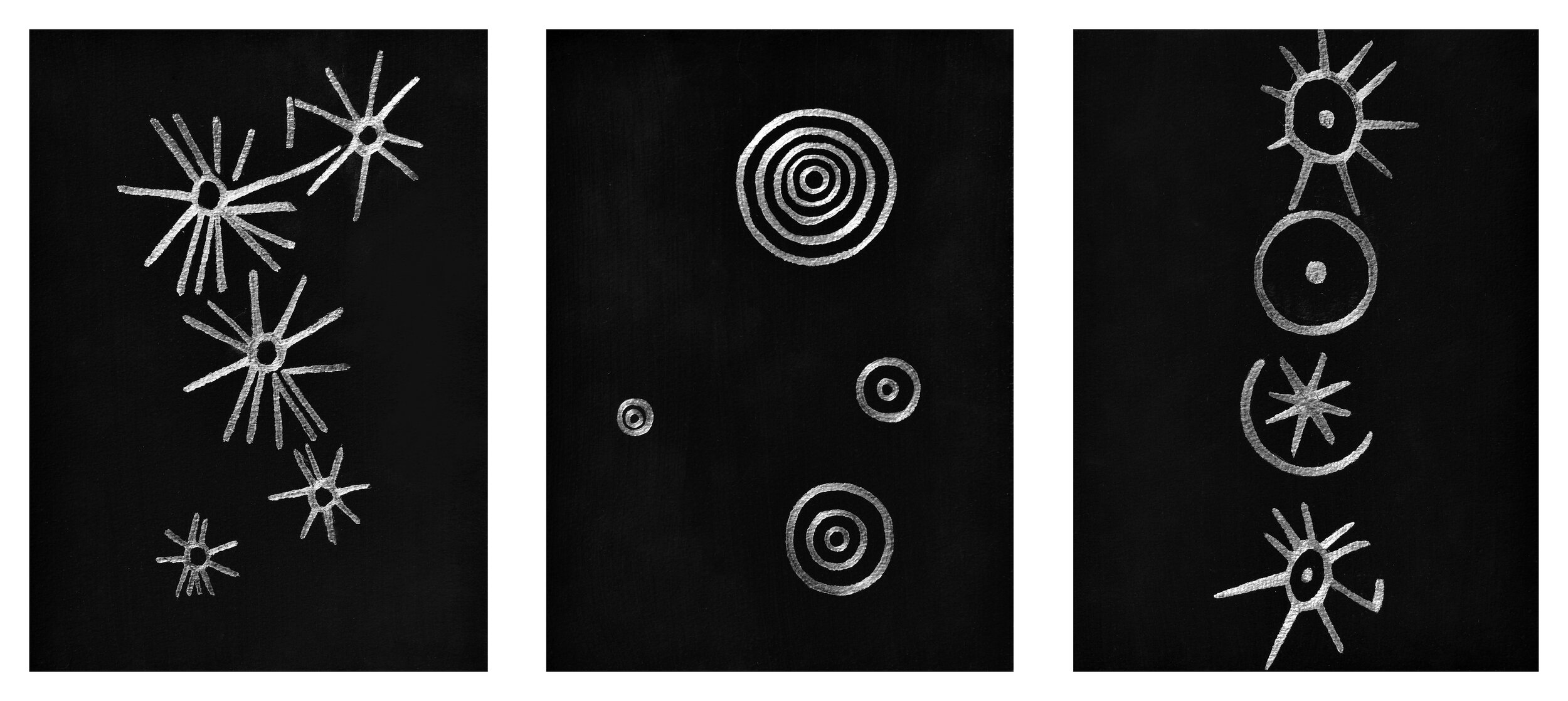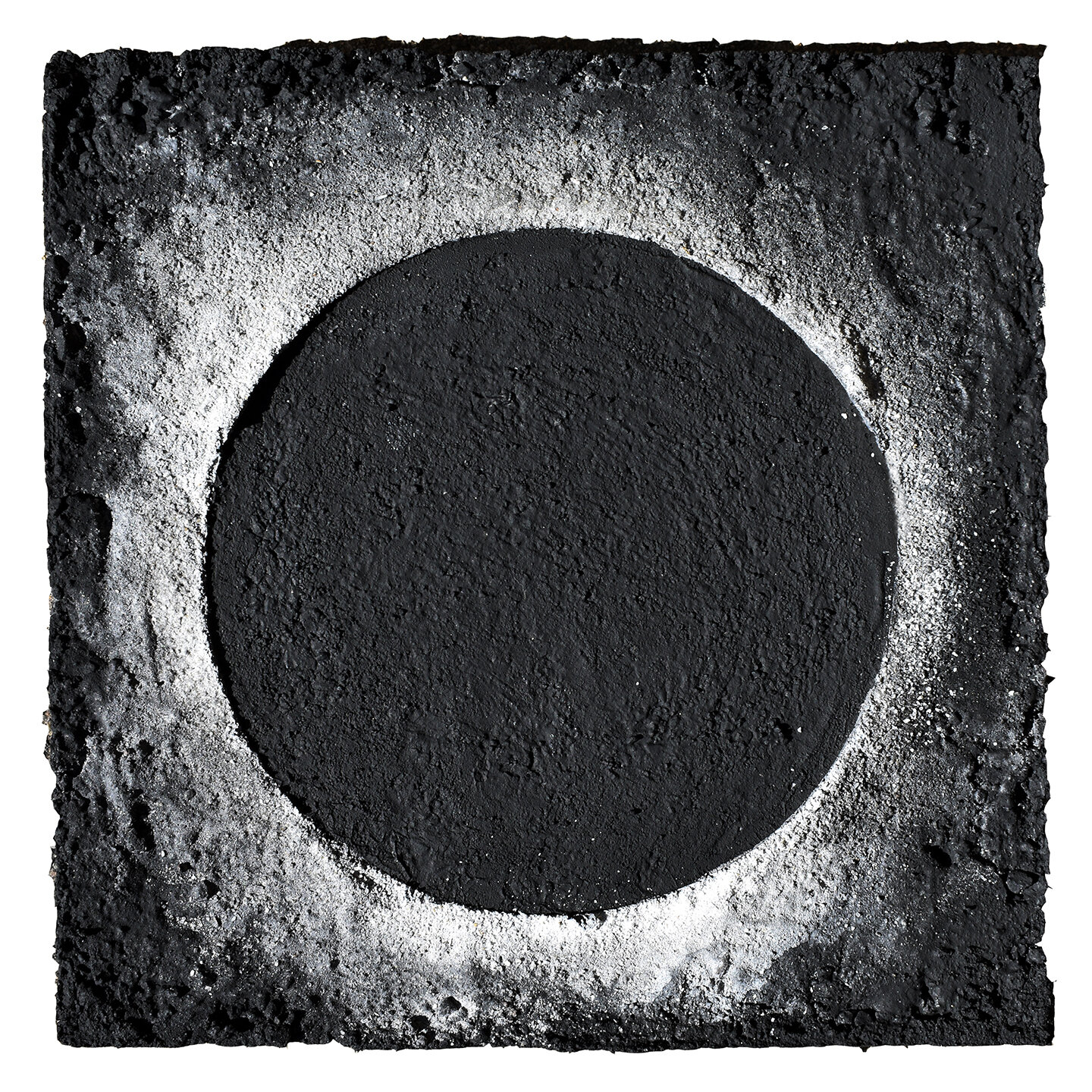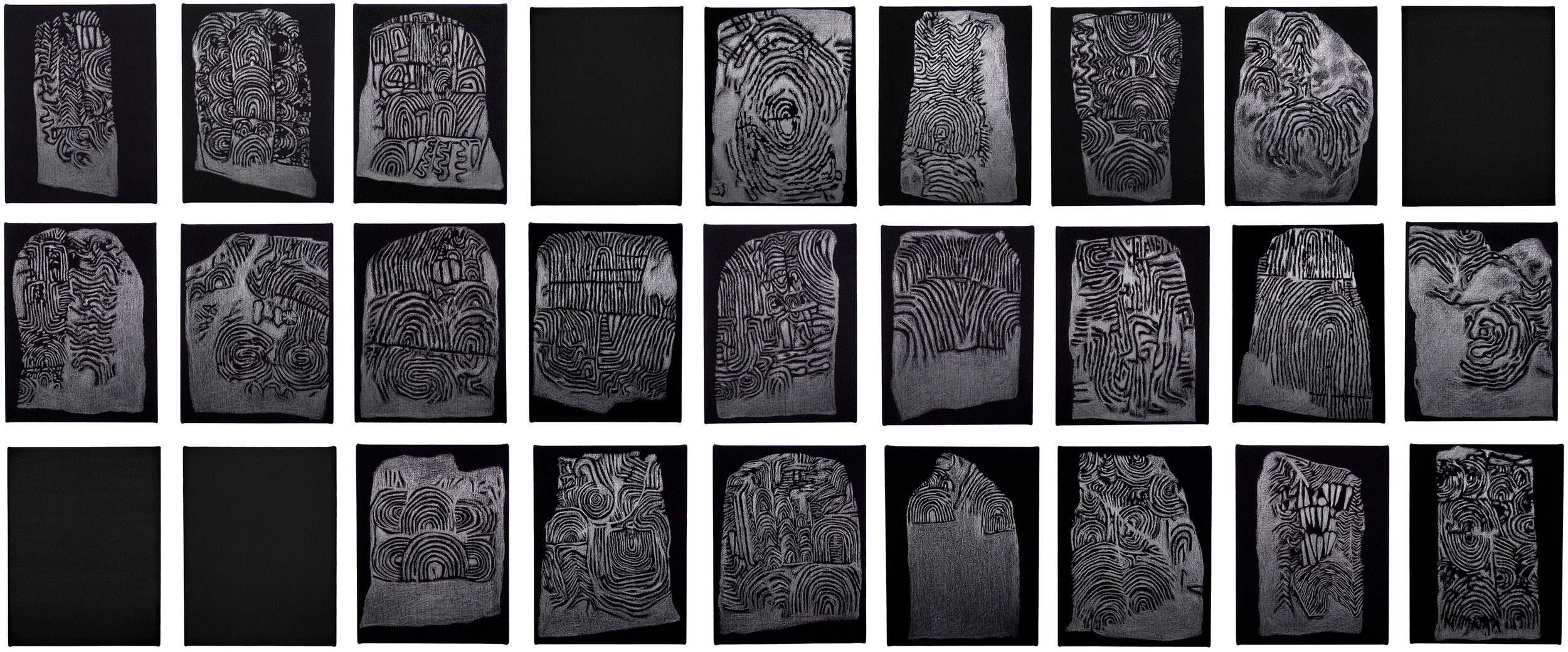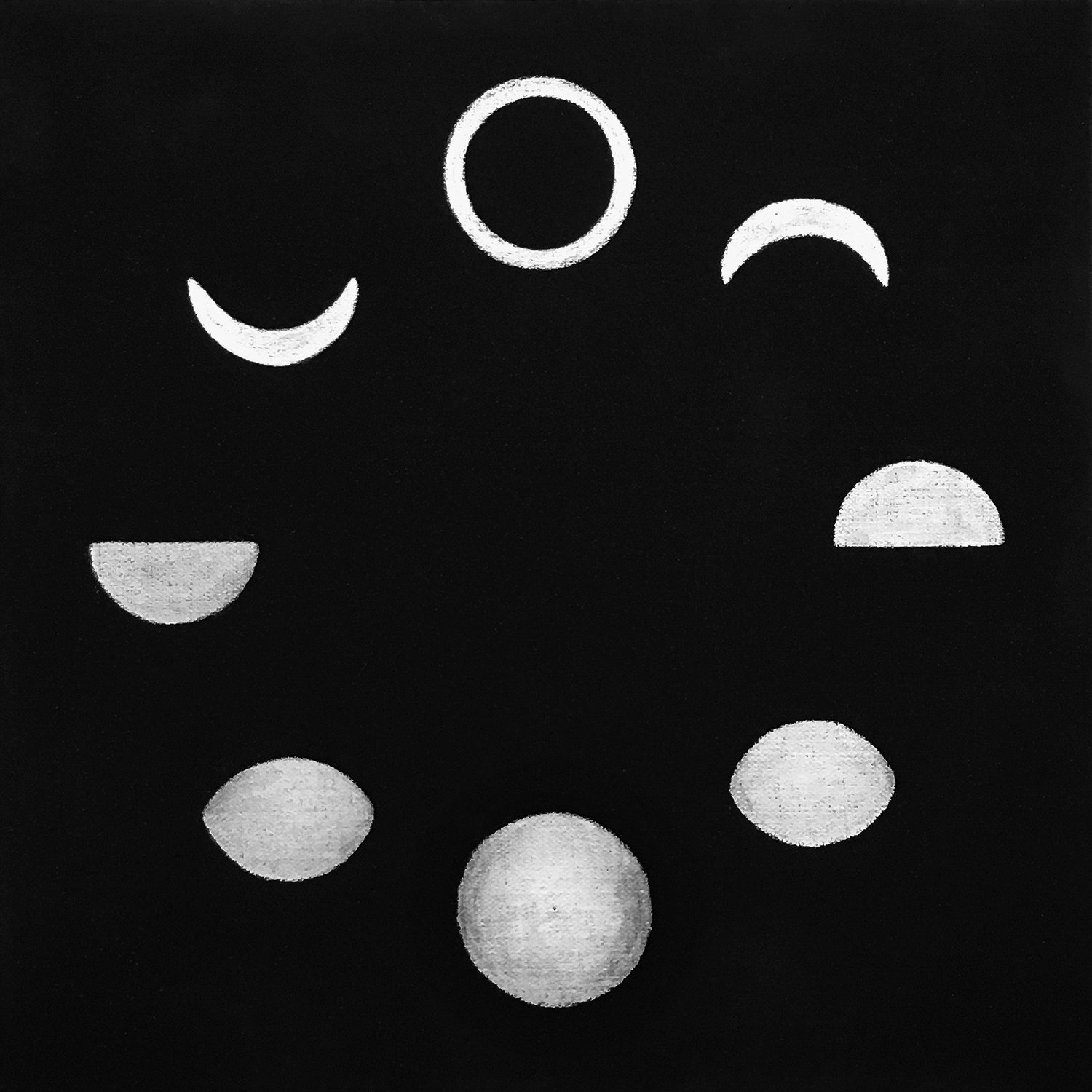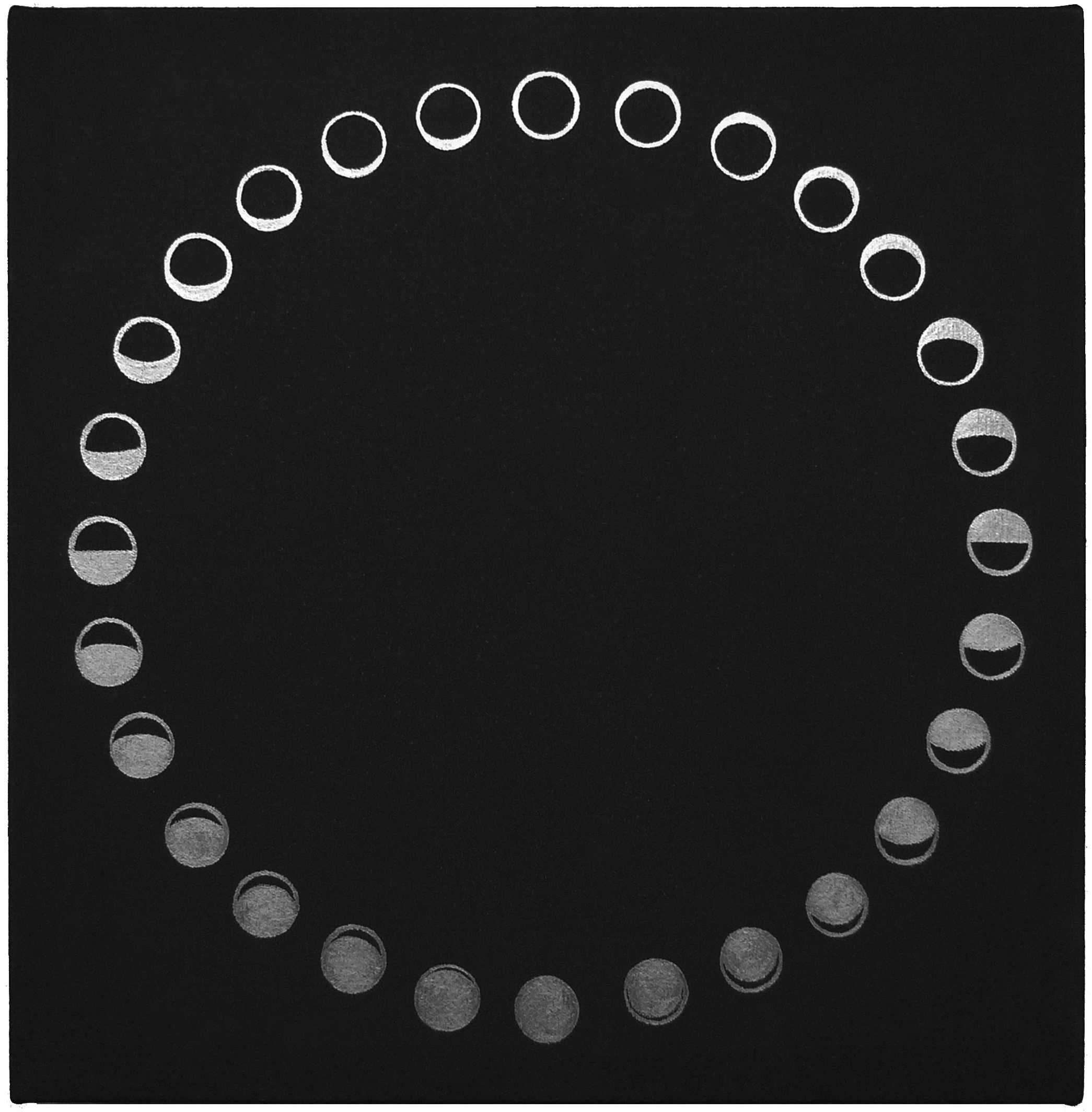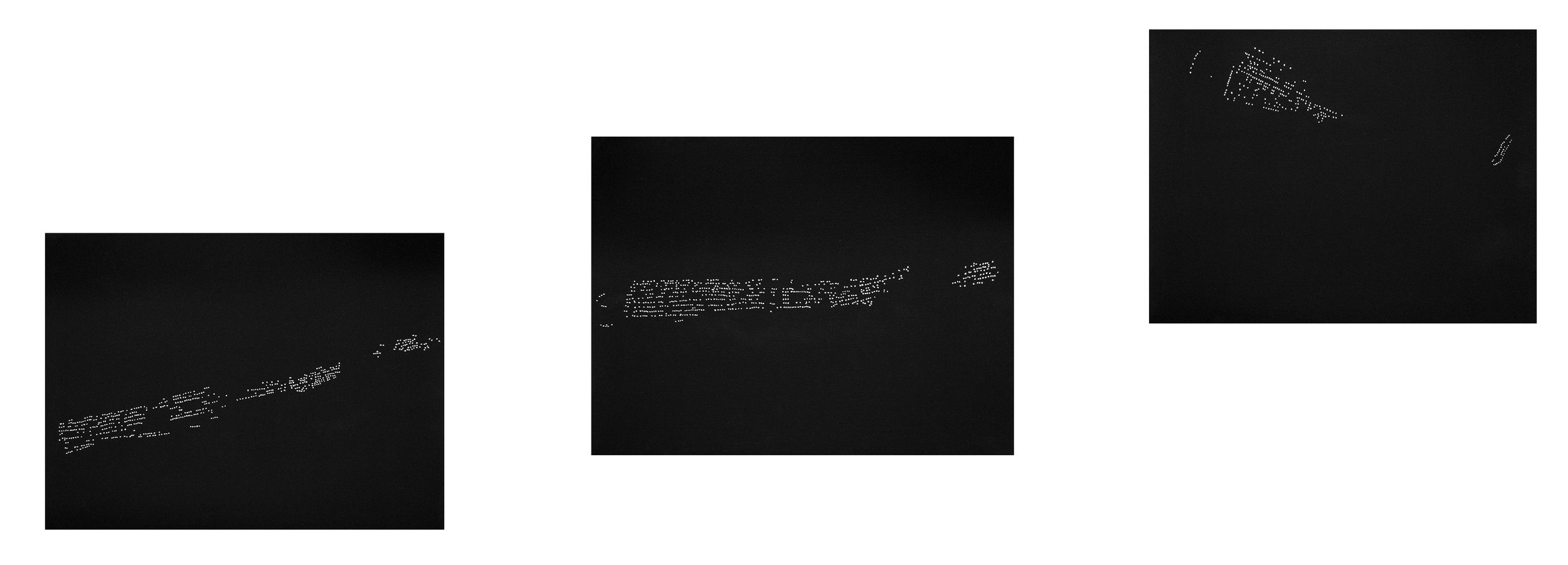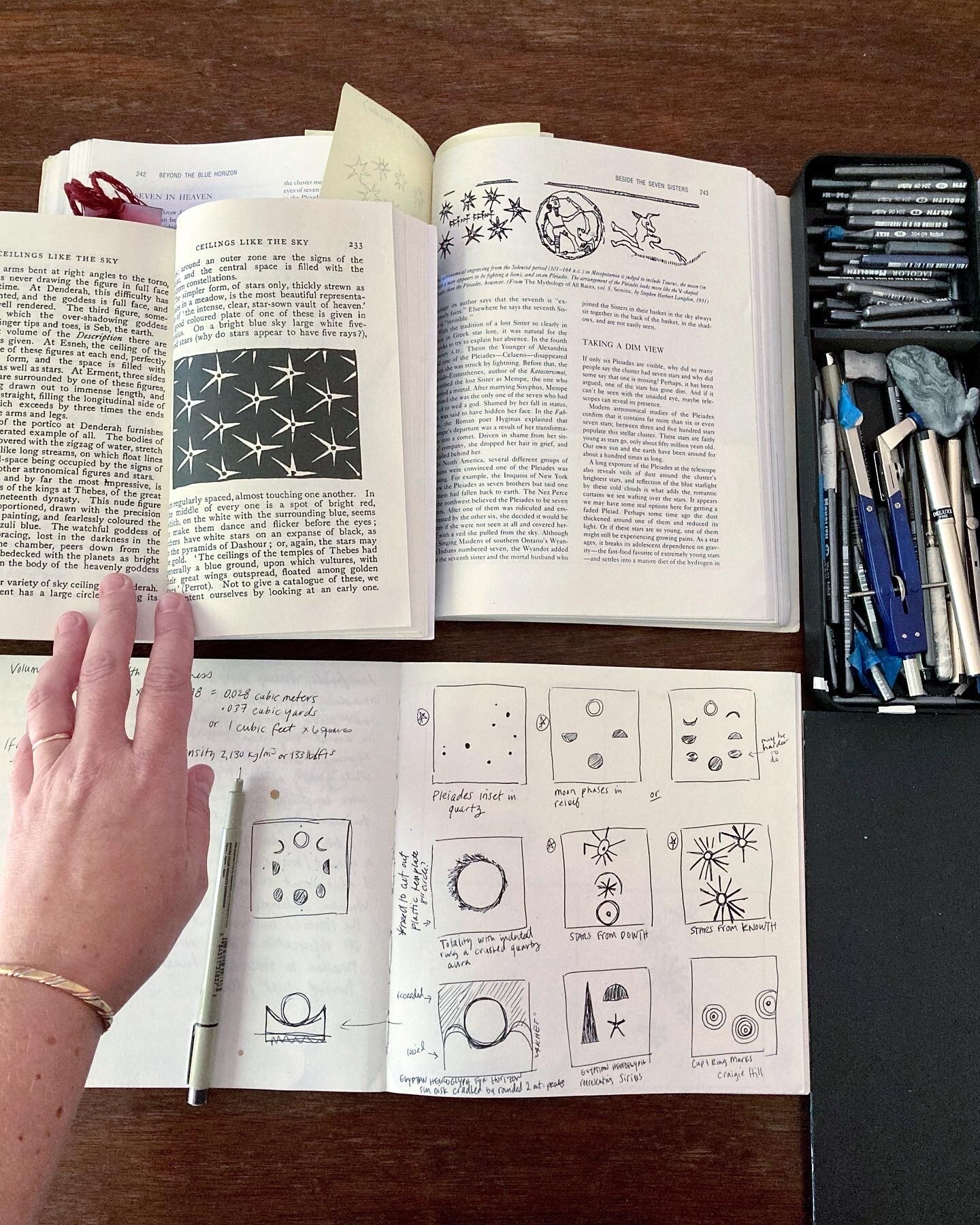Museum of Celestial Art, artist rendering of proposed public art installation, 2018.
Museum of Celestial Art
The Museum of Celestial Art (MCeleA) is a mobile experimental micro-museum that explores an interpretive history of night sky gazing. The project translates ancient celestial artifacts into an immersive installation for public interaction. It contemplates the profound creative influence of cosmic observation, from ancient darkness to its erasure through contemporary light pollution.
The project considers how patterning, materials, and geometric motifs create a visual vocabulary of the night sky across cultures and time, from Western European Neolithic artifacts, to prehistoric observatories from Babylonia to China, the Americas, and more. Representations of celestial artifacts will be integrated into the design and interior installation of the micro-museum structure, including reliefs, shaped canvases, small-scale sculptures, drawings and text for public interaction as a wunderkammer of mysterious cosmic ephemera. The space will offer a poetic contemplation of forms that have permeated time, human perception of the night sky and the unknown.
The MCeleA micro-museum is a mobile polygon shaped structure. Its seven-sided form offers dynamic display surfaces with possibilities for windows or architectural features to orient with celestial or terrestrial sight-lines. A single dramatic diamond shaped window covers an entire wall, evoking a star brought down to earth. Its exterior is clad in charred wood, making it both weatherproof and an emphatic “carbon-based” space that evokes both an ancient megalith and a ritual site. MCeleA has the capacity to travel to urban and rural sites alike, where it may introduce and enhance understanding of the essential human need to connect with a view of our universe.
Carl Sagan mused, “We are a way for the cosmos to know itself.” As humanity hurtles toward extra-terrestrial exploration, we must also confront our deep past with earth-based cosmic observation and the profound ways it informs our cultural evolution. The Museum of Celestial Art creates a direct experience with ancient cosmic mystery and asks what knowledge is lost or endangered as light pollution obscures dark night sky gazing for people around the world. It reconnects us to the sixth-sense humans have with the night sky, where the act of looking outward to the cosmos becomes a radical act of looking inward to ourselves.
Center: Museum of Celestial Art rendering; Counter-clockwise from upper left: Nebra Sky Disk (Germany), Bush Barrow Lozenge (UK), The Stargazer (Turkey), Many Stars Cave (Navajo), Nabta Playa (Africa), Skidi Pawnee Star Chart (USA), Dunhuang Star Map (China), Dendera Zodiac (Egypt), Sumerian Star Chart (Iraq).
Related Works
